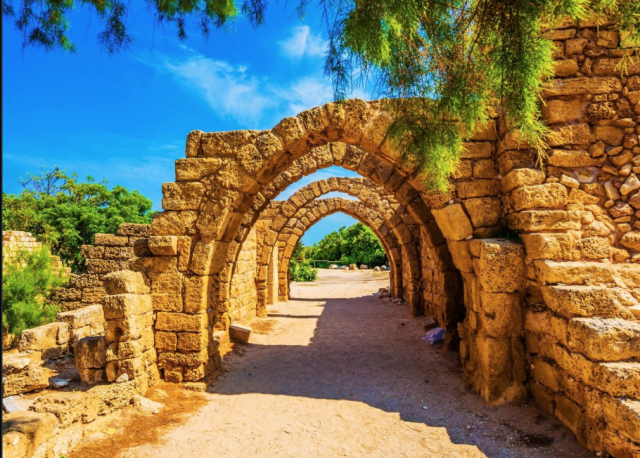Archaeologists digging at the base of the Legio VI Ferrata Roman Legion near Megiddo have found evidence of the first military amphitheater known in the Southern Levant. While remains of over 230 Roman civilian amphitheaters have been found all over the Mediterranean peninsula, fewer military amphitheaters have been excavated and most of those are in the western regions of the empire.
“Military amphitheaters are connected to the military and not to a city. We know of examples of military amphitheaters in the western regions of the Roman Empire such is in Germany, France, and Spain, but they are not known in the eastern half of the Empire. This structure is a few hundred meters from the military base.” Dr. Yotam Tepper of the Israel Antiquities Authority said.
Tepper directs the excavations at Legio excavations together with Matthew J. Adams, director of the W.F. Albright Institute of Archaeological Research in Jerusalem, and Susan Cohen, an archaeologist at Montana State University.
The archaeological project at Legio is conducted under the auspices of the Jezreel Valley Regional Project. The amphitheater is just one part of the excavation of the base of the Roman Sixth Legion that was stationed back in the second to third centuries CE.
Caesarea Israel which includes a large Roman amphitheater and the historic port. @romanhistory1 post turned into a #ThenAndNow Gif. pic.twitter.com/ltylxREXkE
— Andrew Spratt (@andrewsp2009) April 23, 2022
The excavation of the amphitheater is being operated by Mark Letteney from the University of Southern California. The nearby Kibbutz Megiddo has also been giving much-needed strategic assistance
In the first excavation of this area of Legio since Schumacher’s initial foray, the team dug out an area of almost 250 square meters in archaeological sections revealing parts of the flattened arena, remains of ramps made from layers of dirt and rock that would have supported the cavern and two sections of the outside supporting wall.
They have recently begun to reveal the stone wall of the entrance gate to the amphitheater. Also, they found remains of what appeared to have been stone seats, said Tepper, who also exposed parts of stone seats during excavations for his master’s degree in 2003.
First Roman military amphitheater in Southern Levant revealed at excavations near Megiddo https://t.co/0Gk7D0AUCb
— Four Chaplains (@fc11ds) June 8, 2022
“The main question we were looking to answer was if the bowl shape we were seeing on the ground was actually an amphitheater, and basically we have proved it,” said Adams. “We have determined the shape is artificially made it looks like they flattened the entire area down to a natural clay source that was already there. Just today we are starting to see monumental stones from the entrance into the amphitheater gate, which is nice and promising because it is clear that at least the foundation of the wall is there.”


